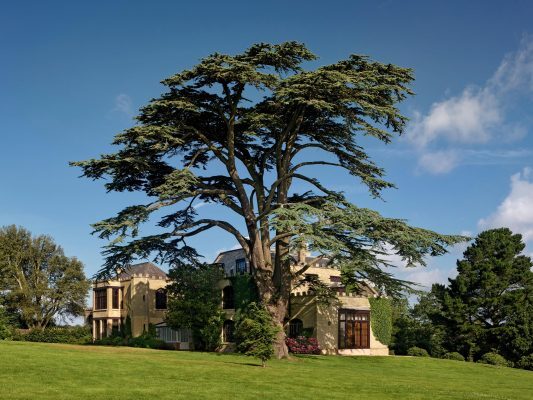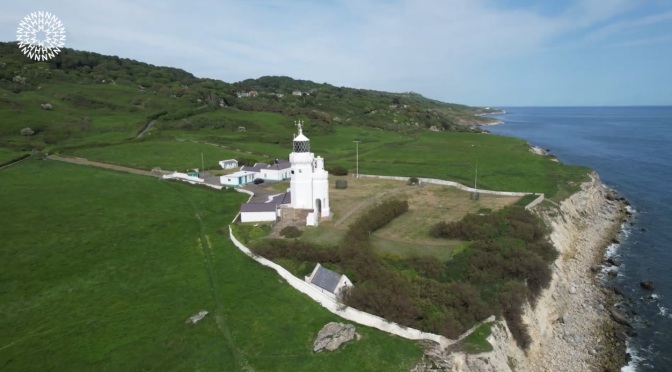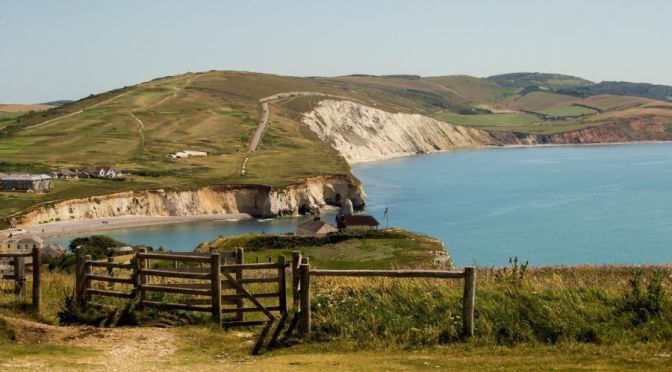Natural History Museum (September 12, 2023) – The Isle of Wight is full of beautiful landscapes, from rolling hills and luscious vegetation to dramatic cliffs and golden, sandy beaches. But have you ever wondered what it would be like to see it all from a bird’s-eye view? Well now you can! So, sit back and relax as we take to the air and soar across the island’s breathtaking land and seascapes.
Tag Archives: Isle of Wight
Museum Views: The Isle Of Wight – Dinosaur Island
Natural History Museum (August 8, 2023) – The Isle of Wight is a traditional British holiday resort. It’s well-known for its beautiful sandy beaches, dramatic cliffs, stunning countryside and many tourist attractions.
Video timeline: 0:00 A brief history of the Isle of Wight 1:13 Theo Vickers tells us about the geology of the island 1:35 Jack Wonfor talks about the diversity of fossil remains and how it is the best place in Europe for dinosaur discovery 2:02 Dr Susannah Maidment explains as to why the island is so good for dinosaur finds 2:35 Over 20 dinosaur species so far have been discovered on the Isle of Wight 2:52 Prof Paul Barrett tells us about the early palaeontologists, including William Fox and Sir Richard Owen 3:15 The Isle of Wight early dinosaur discoveries helped form much of what we know about dinosaurs today. 3:50 Original dinosaur discoveries are still relevant today. 4:15 New dinosaurs still being found today. 4:33 The dinosaurs found on the Isle of Wight. Iguanodon, Polacanthus, Omithopods, Sauropods, Neovenator and Eotyrannus. 5:26 How could you make your own discovery? 5:34 Techniques for finding dinosaur remains. 6:06 Dinosaur Island, the Isle of Wight’s excellent museum of geology, where there are many dinosaurs and fossils. 6:52 Why the Isle of Wight is a lovely place to visit. 7:08 how it is so easy to find a fossil on the beach.
But did you know that it is also the best place in Europe to find dinosaurs and the fossils of numerous other prehistoric animals, from ammonites to alligators?
Join our palaeontologists Dr Susannah Maidment and Professor Paul Barrett, as well as local experts, to discover what makes the Isle of Wight so special to them.
Architecture: Poet Alfred Lord Tennyson’s Isle Of Wight Home ‘Farringford’
After nearly 60 years as a hotel, this former home of the poet Alfred, Lord Tennyson has been triumphantly restored as a house museum. John Goodall reports; photography by Paul Highnam.

On January 21, 1884, the poet laureate Alfred Tennyson was elevated to the peerage as Baron of Aldworth, Surrey, and of Freshwater on the Isle of Wight. As the editor of The Complete Peerage (1896) primly commented when recording this exceptional accolade, ‘the assumption of two places in different counties (more especially when the estate possessed is inconsiderable), cannot be commended’. Tennyson, however, would not have cared. Indeed, he had refused the offer of baronetcy four times and was only finally persuaded to accept it by his friend, the then Prime Minister, William Gladstone.
Tennyson chose this unusual title because — unconventionally for the period — he had houses in both places that he considered to be homes. Aldworth, which he generally occupied in the summer months, was a retreat from his house at Freshwater. This latter building, known as Farringford, was sold by the family in the 1940s and thereafter became a hotel. Returned back into private ownership in 2007, it has now undergone a renaissance at the hands of a Tennyson scholar, who has turned it into both a home and a house museum to the poet.

Fig 1: The library, which was added to the house in 1871 and has been fully restored. Farringford, Isle of Wight. ©Paul Highnam for Country Life
In the years immediately following his marriage in 1850, Tennyson and his wife, Emily, actively searched for a place to live. They heard from friends about a family house at Freshwater, on the north-western extreme of the Isle of Wight. Following a slightly depressing first viewing by Tennyson — then aged 44 — the couple came back together. An account of their visit in November 1853 is given in Emily’s journal. Travelling by train to Brockenhurst — where the railway line then ended — they caught an omnibus to Lymington and crossed on a still evening from the mainland in a rowing boat.
Emily was delighted by the house, which enjoyed an expansive prospect along almost the whole Hampshire coastline, and ‘looking from the drawing-room window, thought “I must have that view”, and so I said to him when alone. So accordingly we agreed… to take the place furnished for a time on trial with the option of purchasing’.

Fig 2: The north front of the house, with its Gothic porch. Farringford, Isle of Wight. ©Paul Highnam for Country Life
Read more at Country Life Magazine: https://ift.tt/l9zibWL
Isle Of Wight Views: 2022 ‘Round The Island Race’
It wasn’t the fastest and a small boat didn’t win, but this year’s Round the Island race was one to remember as a being a classic blast around the Isle of Wight.
The annual Round the Island Race, organised by the Island Sailing Club, is a one-day yacht race around the Isle of Wight, an island situated off the south coast of England. The race regularly attracts over 1,400 boats and around 15,000 sailors, making it one of the largests yacht races in the world and the fourth largest participation sporting event in the UK after the London Marathon and the Great North and South Runs.
Competitors come from all over the UK, other parts of Europe and as far away as the USA to follow the 50 nautical mile course round the Isle of Wight. Starting on the famous Royal Yacht Squadron line in Cowes, the fleet races westabout, to The Needles, round St Catherine’s Point and Bembridge Ledge buoy, and back into the Solent to the finish line at Cowes.
Spectators can find many vantage points, both on the mainland and Isle of Wight, to watch the race progress. Those who cannot get to watch in person can always keep an eye on the race’s progress on the website, via our live text commentary and our boat tracking facility.
Views: Isle Of Wight Off South Coast Of England
The Isle of Wight is an island off the south coast of England. It’s known for its beaches and seafront promenades such as sandy Shanklin Beach and south-facing Ventnor Beach, which is dotted with vintage beach huts. Dinosaur remains and fossils can be seen in areas like Compton Bay and Yaverland Beach. On the island’s western point, The Needles are 3 huge, white chalk rocks, guarded by a 19th-century lighthouse.





